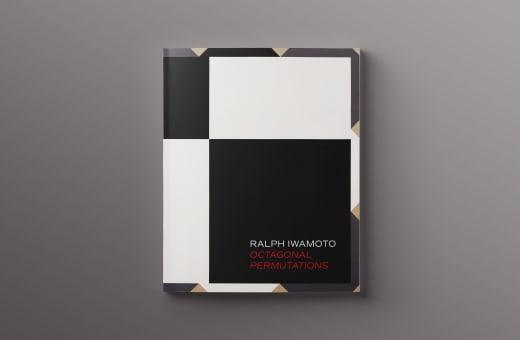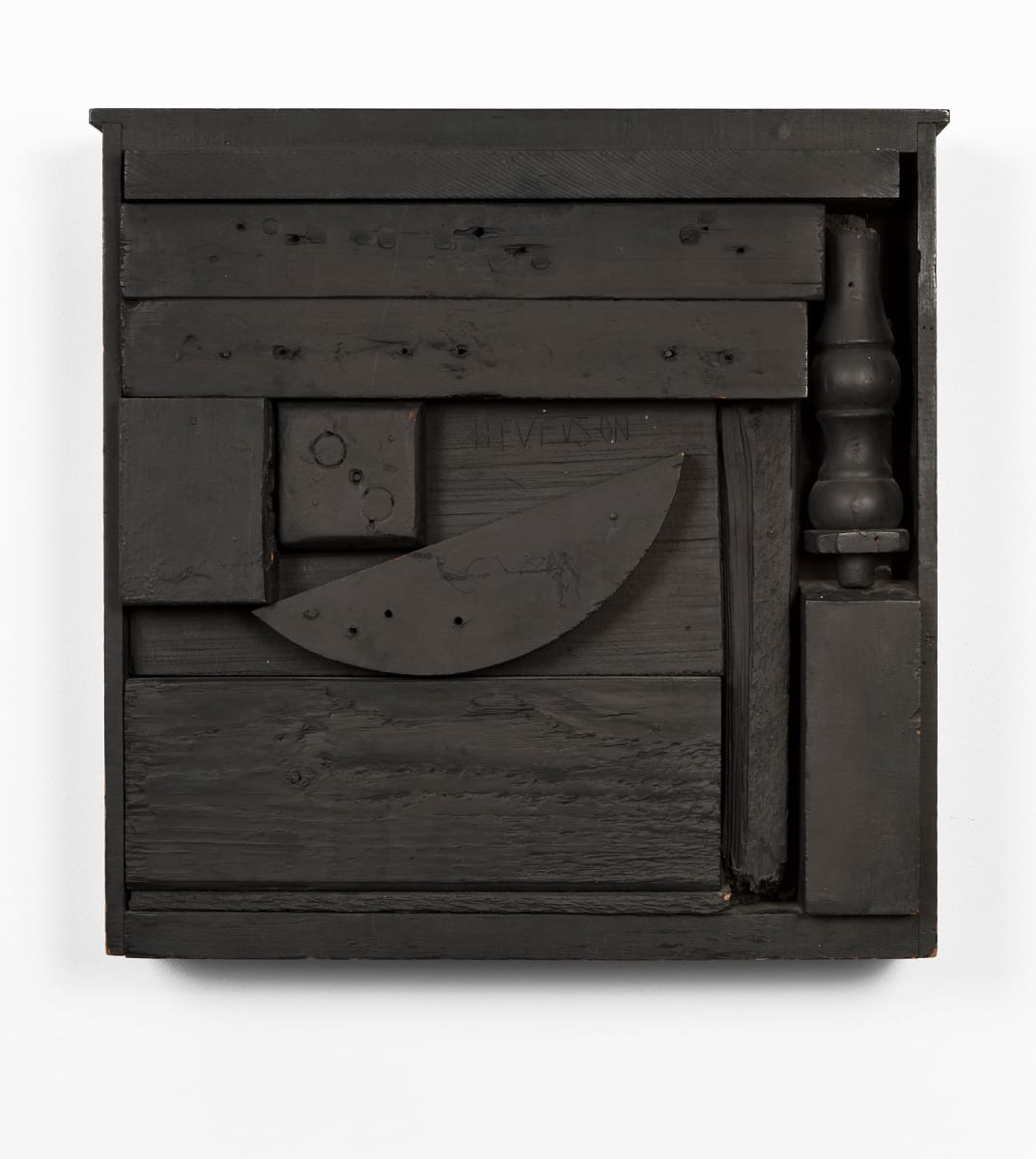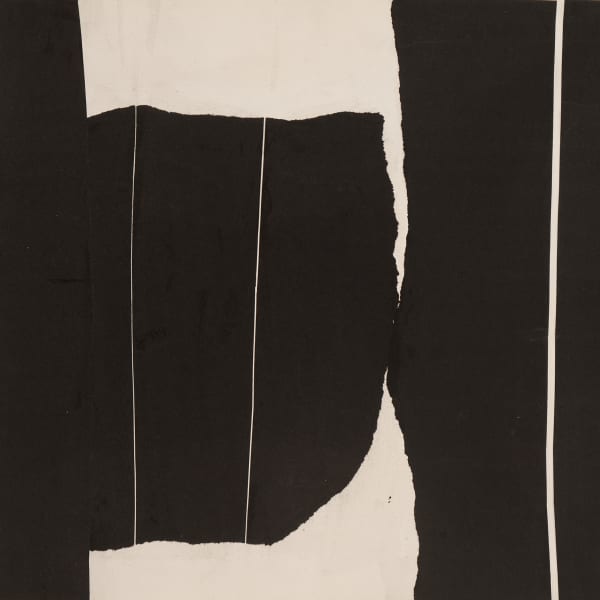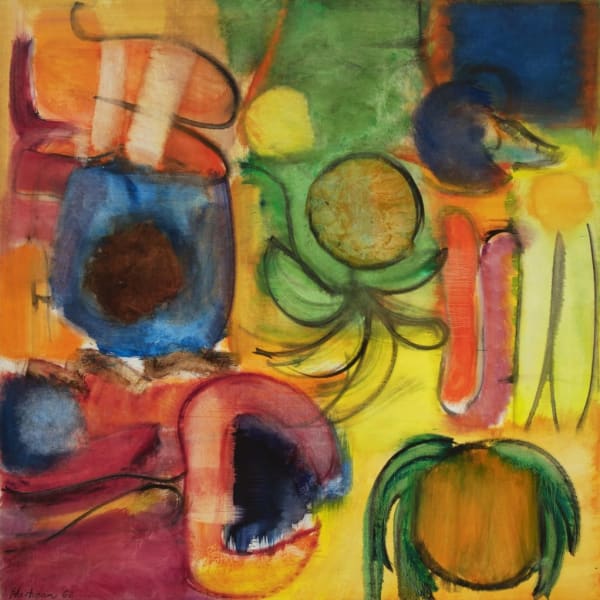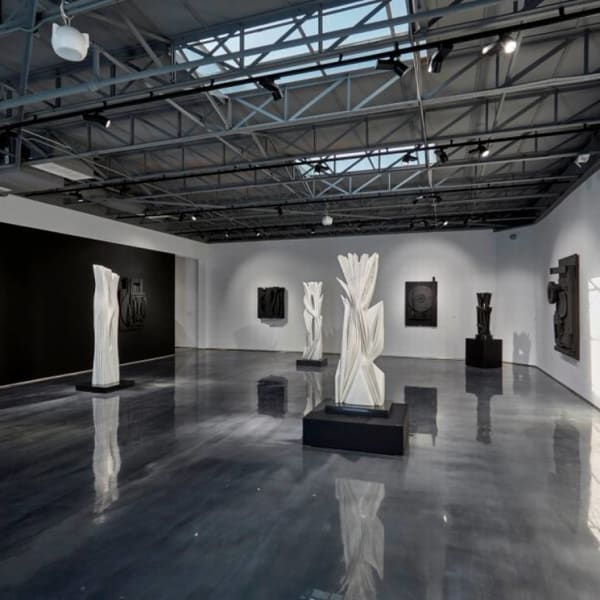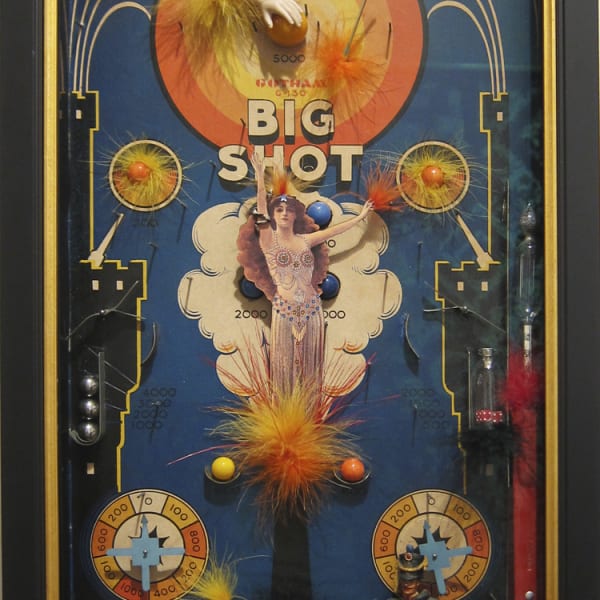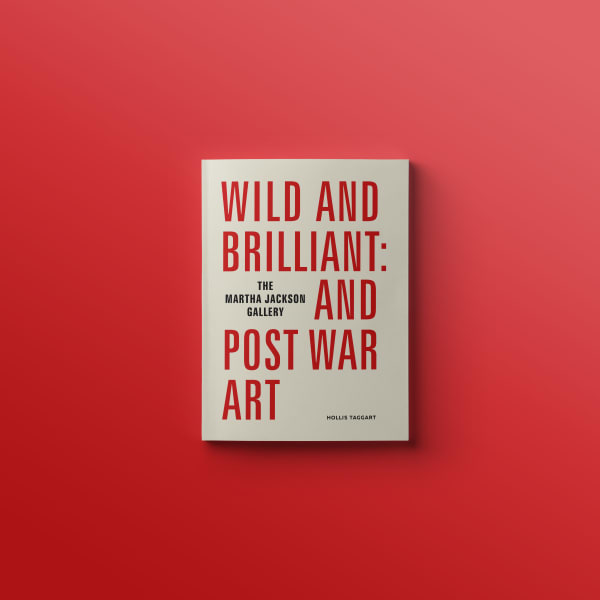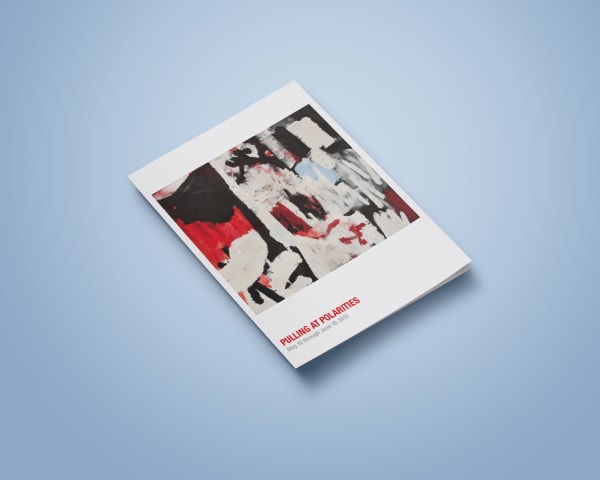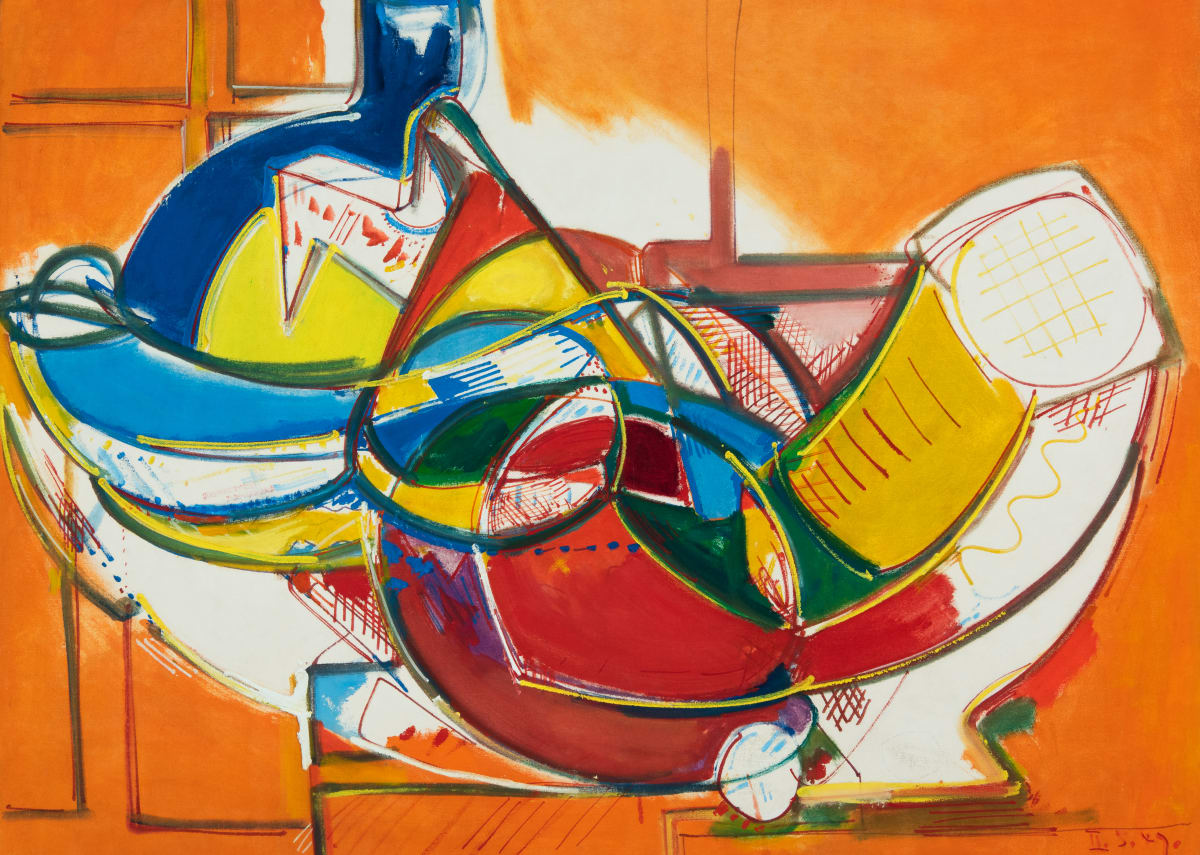
Nevelson unites the disparate elements—remnants from our collective past and discarded memories—by painting her constructions in a single color, usually black or white.
Acclaimed for her development of a unique sculptural vocabulary and process, Louise Nevelson remained committed to innovation, experimentation, and her own personal artistic style for over five decades. Working within tradition of assemblage, she crafted abstract three-dimensional boxes, walls, totems and environments, comprised mostly of assembled found materials. The artist discovered her raw materials while walking the streets of New York, drawing cast-off debris from curbsides, dumps, and demolition sites. The found objects incorporated in her sculptures range from architectural remnants such as chair legs and balusters to scrap construction pieces revealing the ravages of tools and time. Nevelson unites the disparate elements—remnants from our collective past and discarded memories—by painting her constructions in a single color, usually black or white. The effect is one of the play of shadows and the joys of subtle discoveries.
Acclaimed for her development of a unique sculptural vocabulary and process, Louise Nevelson remained committed to innovation, experimentation, and her own personal artistic style for over five decades. Working within tradition of assemblage, she crafted abstract three-dimensional boxes, walls, totems and environments, comprised mostly of assembled found materials. The artist discovered her raw materials while walking the streets of New York, drawing cast-off debris from curbsides, dumps, and demolition sites. The found objects incorporated in her sculptures range from architectural remnants such as chair legs and balusters to scrap construction pieces revealing the ravages of tools and time. Nevelson unites the disparate elements—remnants from our collective past and discarded memories—by painting her constructions in a single color, usually black or white. The effect is one of the play of shadows and the joys of subtle discoveries.
Nevelson was born in Kiev, Ukraine, in 1899, and her family immigrated to the Rockland, Maine, when she was two years old. When she was six years old, she found great amusement in playing with wood scraps from her father’s lumberyard; this early experimentation led her to announce, at the age of nine, her desire to become a sculptor. After marrying Charles Nevelson, in 1920 the artist settled in New York, where she studied drama, voice, modern dance, and art. From 1929 to 1930, she took classes at the Art Students League with Kenneth Hayes Miller. In 1931, she relocated to Munich, to study under the legendary instructor Hans Hofmann.
Her training encouraged her confidence, and after participating in several important group shows, in 1941 the artist received her first solo exhibition, at Nierendorf Gallery, New York. There she displayed an environment with overtones of a prehistoric cave, an Egyptian tomb and a well-designed store window, conjuring a real or imagined world or perhaps a vanished and unpopulated one. Five years later, she was included in an important exhibition of American sculpture at the Whitney Museum. During this period the sculptor’ star was ascendant, and her reputation was cemented in the 1950s. In particular, her 1959 exhibition of all-white sculptures, called Dawn’s Wedding Feast, at the Museum of Modern Art, New York, drew critical acclaim, and the artist was lauded for developing a new sculptural mode. In 1962, the sculptor represented the United States at the prestigious Venice Biennale.
In the first decades of her career, Nevelson constructed all of her works. In 1960, she began to have boxes made especially for her, rather than relying only on found ones. These new boxes did not bear the signs of wear and use that her previous found crates and boxes yielded—instead, they were sleek and flawless. In this way, Nevelson’s newly constructed boxes reveal a dialogue with the minimal aesthetic of the mid-to-late 1960s.
In the 1960s and 1970s, Nevelson continued to work in her preferred color, black. Unlike many other colors, black does not have specific connotations or evoke specific symbolic associations; instead, according to the artist, it invites mystery, a quality that she values in her sculpture. As the color of shadows, it also allows Nevelson to investigate certain sculptural properties, such as space, relief, and light, in novel ways. As the sculptor once remarked, “I really deal with shadow and space….I identify with the shadow.”
During these decades, she also experimented with other colors and materials. Incorporating gold, Plexiglas, and steel into her compositions allowed for greater range of textures, scales, and visual effects. At the same time, she worked variously with different sizes—crafting intimate table-top pieces as well as fulfilling commissions for huge public works. Nevelson’s boxes, filled with reliefs, were sometimes even sealed with a hidden form inside, generating a sense of mystery and discovery. These boxes were displayed individually and also combined to form larger units, creating imposing constructions on an architectural scale. She worked in series, creating numerous iterations on a single theme before moving to a new one, often launching the next set of sculptures in a different scale or material. In this way, there is a continuity in Nevelson’s work from the 1950s onward, and yet she nonetheless continued to innovate until her death in 1988.
Her work has been collected by public institutions and private individuals over the course of her career and subsequently, and it appears in many of the world’s most esteemed museums, including the Museum of Modern Art, New York; the Whitney Museum of American Art; the Guggenheim Museum; the Museum of Fine Arts, Houston; the Museum of Fine Arts, Boston; the San Francisco MoMA; the Detroit Institute of Arts; the Israel Museum, Jerusalem; the National Galleries of Scotland; and the Tate Gallery, London. Even more importantly, she has served as an inspiration and role model to a generation of younger women artists.



